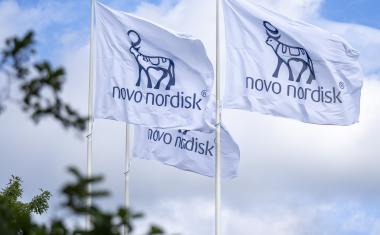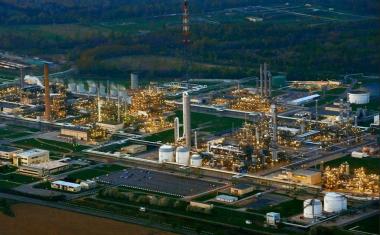What South Stream Move Means For European Gas
Germany's Wintershall, a unit of BASF, said on Monday it would join Russia's South Stream gas pipeline
project to pump gas under the Black Sea to Europe. BASF Chief Executive Juergen Hambrecht told Russian Prime Minister Vladimir Putin that Wintershall would sign up to the project, led by Russia's Gazprom, to transport 63 billion m3 of gas a year to Europe from 2015.
The 15% stake is to cost BASF - which already has a stake in Gazprom's Nord Stream Baltic gas pipeline - at least €1.5billion 2.13 billion), it said. This puts the cost of the offshore project in total at least €10 billion and the total cost of onshore, offshore and connecting pipelines €20-25 billion. Gazprom would retain 50%, Russia's deputy prime minister said.
Italy's Eni and France's EDF are also involved in the project.
What Is Russia's Interest?
Gazprom wants to secure long-term gas contracts with Europe, its main customer for 40 years, although Moscow faces pressure from customers to allow more spot pricing of gas, instead of a more profitable - for Russia - oil-linked pricing system. Russia argues long-term contracts provide a clear outlook on future revenue so it can plan for costly exploration and new infrastructure.
South Stream serves several purposes:
• It expands Russia's gas export network to new markets in southeast Europe.
• It helps undermine the investment case for the rival $10.8 billion EU-backed Nabucco project, which aims to make the European Union less dependent on Russian gas.
• It divides European utilities between those wanting to be close partners with Russia and others that want to diversify supply sources away from Russia. The EU is concerned about dependency on Russian gas.
Europe last year bought 25% of its total gas supply of 560 bcm from Russian and the Caspian region.
Germany gets nearly 40% of its gas from Russia, which some argue demands urgent diversification away from a cozy relationship with Moscow, while others argue it means Berlin should be on best terms with Russia.
What Is The Benefit For Wintershall?
Wintershall benefits from a closer business relationship with Russia and secures more access to gas shipments and joint exploration earnings.
When South Stream gas flows, Wintershall will not need to diversify into new gas regions fraught with potential for political unrest. It would also not need to invest in liquefied natural gas (LNG) infrastructure if it can rely on pipeline gas.
Its marketing joint venture Wingas, a 50/50 joint venture with Gazprom, will have first rights to big supply options for its distribution business inside Western Europe.
How Will Wintershall Distribute The Gas In Europe?
Wintershall and Gazprom have a joint trade subsidiary, WIEE in Zug, Switzerland, which already supplies Romania and Bulgaria and is expanding into southeast European markets. It would be better placed to expand in the region with additional supply volumes from South Stream.
Why Are ENI And EDF Involved?
Italy is dependent on imported oil and gas and has nurtured a close relationship with Russia. If it can dominate pipeline projects, it not only has first option at gas arriving in the region but also could generate revenue from distribution to new gas markets.
France equally needs access to more Russian gas to reduce dependency on central European suppliers, which rely on the current transport routes through Ukraine and Poland.
Effect On Nabucco?
South Stream is a rival to Nabucco, a pipeline planned by European companies aiming to bypass Russia and Ukraine by importing gas from the Caspian region via Turkey.
Whether Nabucco can secure enough gas and make a strong investment case remains unclear, with a key Azeri gas sales deal expected in June.
If South Stream is built it could swamp the region with gas via Russia and could harm Nabucco's chances.
Price Effect On Europe?
Greater dominance by Russia, which favors oil-indexed gas contracts, may mean higher prices than on fast-developing spot gas markets with more varied supply sources.
It might also dampen enthusiasm for European shale gas exploration, an unconventional source of gas that has made North America largely self-sufficient over the last few years.
Will More Pipelines Change The Spot Gas Market?
The jury is out. More pipelines would suggest more competition. However, this would depend on who explores for gas, controls transport and sets prices.
Russia is aiming to shield South Stream from European competition safeguards and is seeking an exemption from EU rules governing pipeline ownership by producers.
















